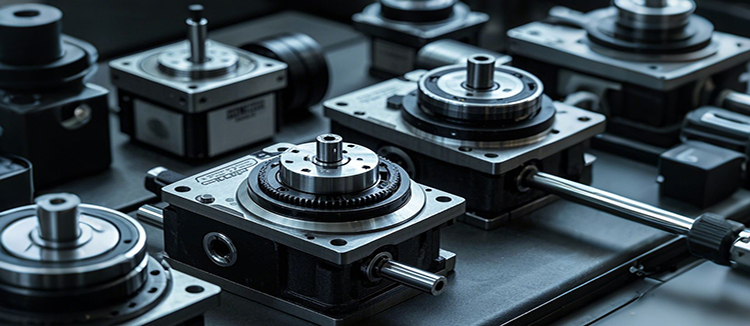Understanding the Role and Benefits of Harmonic Reducer in Industrial Applications
When it comes to precision engineering and the transmission of mechanical power, the Harmonic Reducer stands out as a critical component. This sophisticated device is widely used in various industries due to its ability to reduce speed and increase torque, which are essential for the smooth operation of machinery. In this article, we will delve into the intricacies of the Harmonic Reducer, its applications, and the advantages it brings to the table.

The Harmonic Reducer, also known as a harmonic drive, is a mechanical transmission device that uses a wave generator to cause a flex spline to mesh with an outer ring gear. This interaction allows for a significant reduction in speed while simultaneously increasing torque. The unique design of the Harmonic Reducer enables it to achieve high precision and efficiency, making it an indispensable part in applications where accuracy and reliability are paramount.
One of the primary applications of the Harmonic Reducer is in robotics, where precise control and movement are crucial. The reducer allows for the conversion of high-speed, low-torque motor output into low-speed, high-torque output, which is ideal for the actuation of robotic arms and joints. This capability ensures that robots can perform tasks with the required level of precision and force, enhancing their overall performance and functionality.

In addition to robotics, the Harmonic Reducer finds use in aerospace and automotive industries. In aerospace, it is employed in the control systems of satellites and spacecraft, where the need for reliable and precise movement is critical. In the automotive sector, the Harmonic Reducer is used in electric and hybrid vehicles for steering and braking systems, contributing to the vehicle's efficiency and safety.
The benefits of using a Harmonic Reducer are manifold. Firstly, it offers a high gear ratio, which is essential for applications requiring significant torque multiplication. Secondly, its compact design allows for space-saving integration into various systems. Thirdly, the Harmonic Reducer is known for its high efficiency, which translates to less energy loss and improved performance. Lastly, its low backlash and high positioning accuracy make it ideal for applications that demand precision.
Maintenance is another area where the Harmonic Reducer excels. Due to its robust construction and the use of high-quality materials, the reducer requires minimal maintenance, which reduces downtime and operational costs. This is particularly beneficial in industries where continuous operation is crucial, such as in manufacturing and processing plants.
As technology advances, the demand for more efficient and reliable mechanical components is on the rise. The Harmonic Reducer, with its ability to deliver high torque at low speeds, is at the forefront of meeting these demands. Its versatility in application and its contribution to the efficiency of various systems make it a preferred choice among engineers and designers.
Investing in a Harmonic Reducer is not just about acquiring a mechanical component; it's about enhancing the capabilities of your machinery and equipment. Whether you're in the market for a reducer for a specific project or looking to upgrade your existing systems, understanding the role and benefits of a Harmonic Reducer is essential for making informed decisions.
As we conclude our exploration of the Harmonic Reducer, it's clear that this component plays a pivotal role in the world of precision engineering. Its applications span across various industries, and its benefits are undeniable. For those seeking to improve the performance and reliability of their machinery, the Harmonic Reducer is a worthy consideration.










